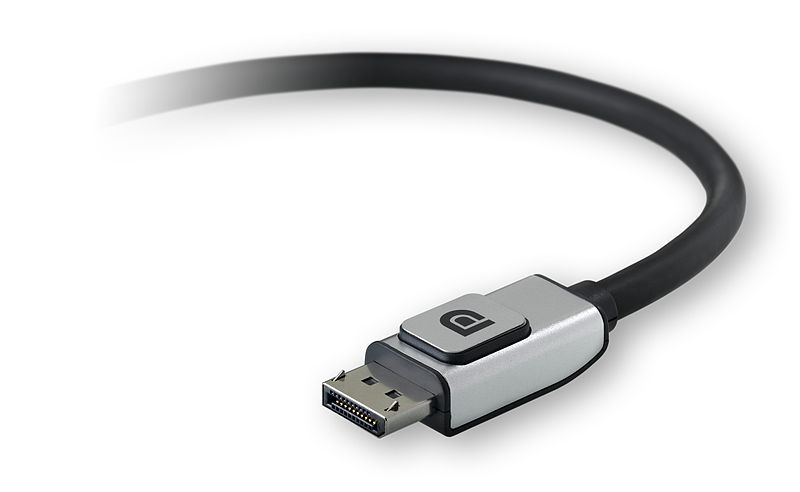The most common digital connection in home theaters, TVs, set-top boxes, Blu-ray players, A/V receivers, gaming consoles, camcorders and digital cameras is the HDMI audio/video interface. Even some smart phones are now demonstrating it. In fact, there isn’t a modern device that doesn’t come equipped with HDMI inputs to connect a gaming console or box.
What most may not know is that there is another standard available: DisplayPort. It will appear alongside HDMI in many modern, add-in video cards and laptops marketed to business users. However, it is not usually included in Windows PCs aimed at consumers.
They both send high-definition digital video and audio from a source device to a display. So what is the big difference? Is one better than the other?
About HDMI
 The High Definition Multimedia Interface (HDMI) has been around more than ten years now. The connectors have 19 pins and usually come in three sizes:
The High Definition Multimedia Interface (HDMI) has been around more than ten years now. The connectors have 19 pins and usually come in three sizes:
- Type A (standard) – most common
- Type C (mini)
- Type D (micro)
One of the confusing aspects of the HDMI is that there are four types of cables. Meaning, using the wrong cable can cause visual and lighting glitches along with audio/video synchronization problems. The four cables in summary are:
- Standard HDMI Cable: Provides enough bandwidth for 720p and 1080i resolution video.
- Standard HDMI Cable with Ethernet: Same as above but has added support for 100-mbps Ethernet.
- High Speed HDMI Cable: Provides more bandwidth, and can carry video with a resolution of 1080p or higher (fine for movies, but horrible for gaming). Can also handle 3D video.
- High Speed HDMI Cable with Ethernet: Same as above with added support for 100-mbps Ethernet.
All four types of cables have ARC (Audio Return Channel) that sends the audio from the TV tuner in a HDTV back to the AV receiver.
HDMI is meant to handle a single video stream and a single audio stream, so it only drives one display at a time. This works fine for one monitor, but nowadays, it is very popular to have multiple screens going at once.
About DisplayPort
![]() DisplayPort was developed in 2006 with the goal of updating the much older VGA and DVI standards used mainly for computer displays.
DisplayPort was developed in 2006 with the goal of updating the much older VGA and DVI standards used mainly for computer displays.
The connectors have 20 pins and are available in two sizes: DisplayPort and Mini DisplayPort (port of choice for Microsofts’s Surface Pro Tablet).
What makes DisplayPort somewhat easier to comprehend is that there is only one type of cable. The current version (1.2) delivers enough bandwidth to carry video resolutions of up to 3840 by 2160 pixels at a refresh rate of 60Hz, and it supports all common 3D formats. They can carry multi-channel digital but not Ethernet data and the standard doesn’t have an audio return channel.
A single DisplayPort interface can support up to four monitors at 1920 by 1200 pixel resolution each, or two monitors at 2560-by-1600 pixel resolution, with each display receiving independent audio and video streams.
Which is Best? HDMI or DisplayPort?
In the end, DisplayPort doesn’t quite compete with HDMI, but supplements it. For multiple displays, it’s a great add-on.
The main problem seems to be that many computer manufacturers only take HDMI into consideration – not realizing that DisplayPort offers as much to consumers as it does to business users.


















